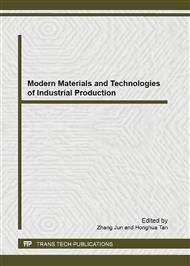p.304
p.308
p.314
p.319
p.325
p.331
p.337
p.341
p.347
Disc Brake Optimization Design and Finite Element Analysis
Abstract:
Disc brake with the advantages of simple structure and good braking performance is widely used. But the design method of the existing brake needs a lot of calculation, test and modify repeatedly, manpower cost and long development cycle. This paper establishes a brake temperature minimum and maximum braking torque multi-objective optimization mathematical model, and then uses MATLAB optimization solution; and the finite element method (fem) is used for the transient temperature field validation. Research shows that the method is feasible, which can effectively improve the disc brake braking performance, and improve the efficiency of development.
Info:
Periodical:
Pages:
325-330
Citation:
Online since:
September 2013
Authors:
Keywords:
Price:
Сopyright:
© 2013 Trans Tech Publications Ltd. All Rights Reserved
Share:
Citation:


